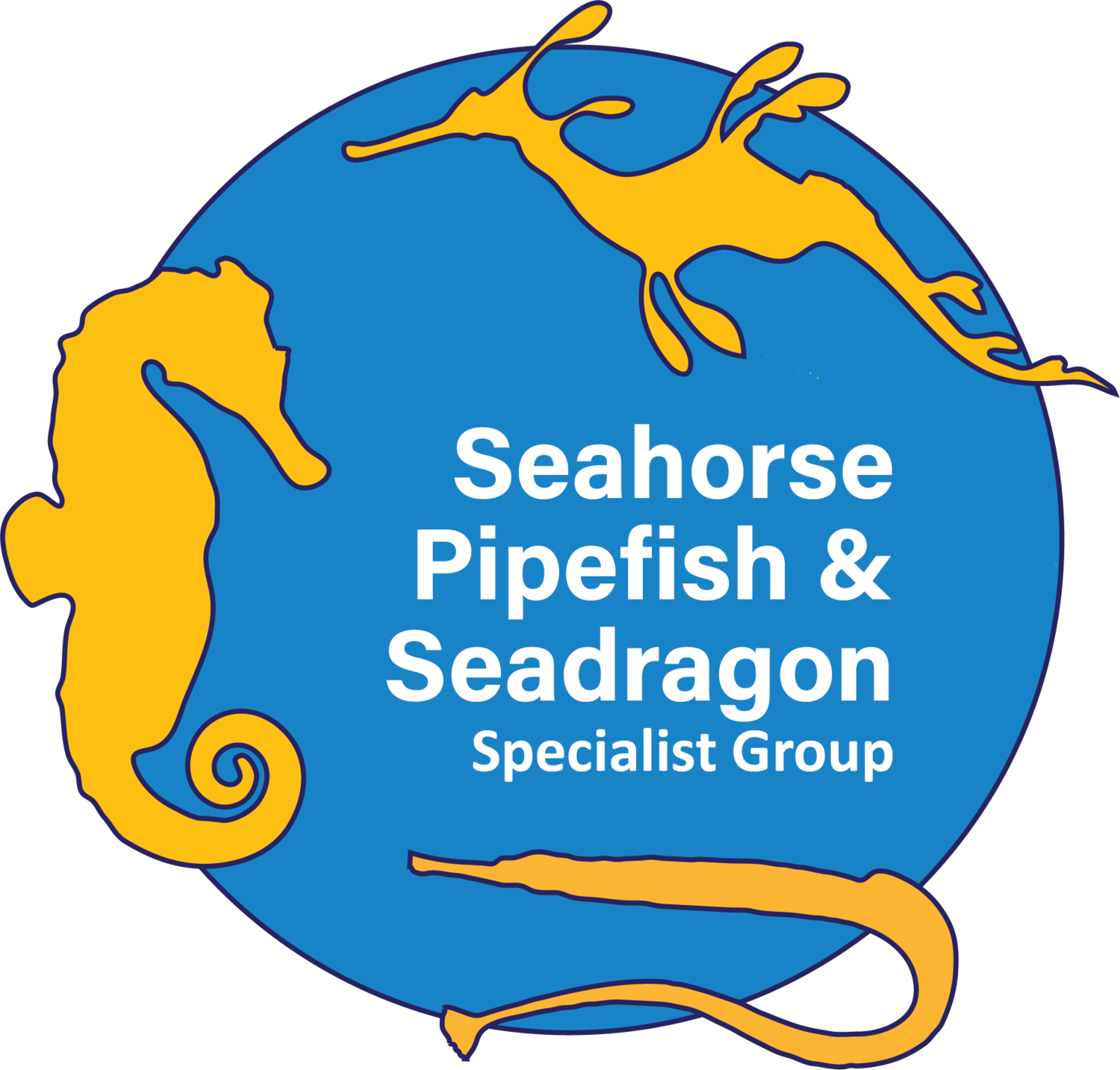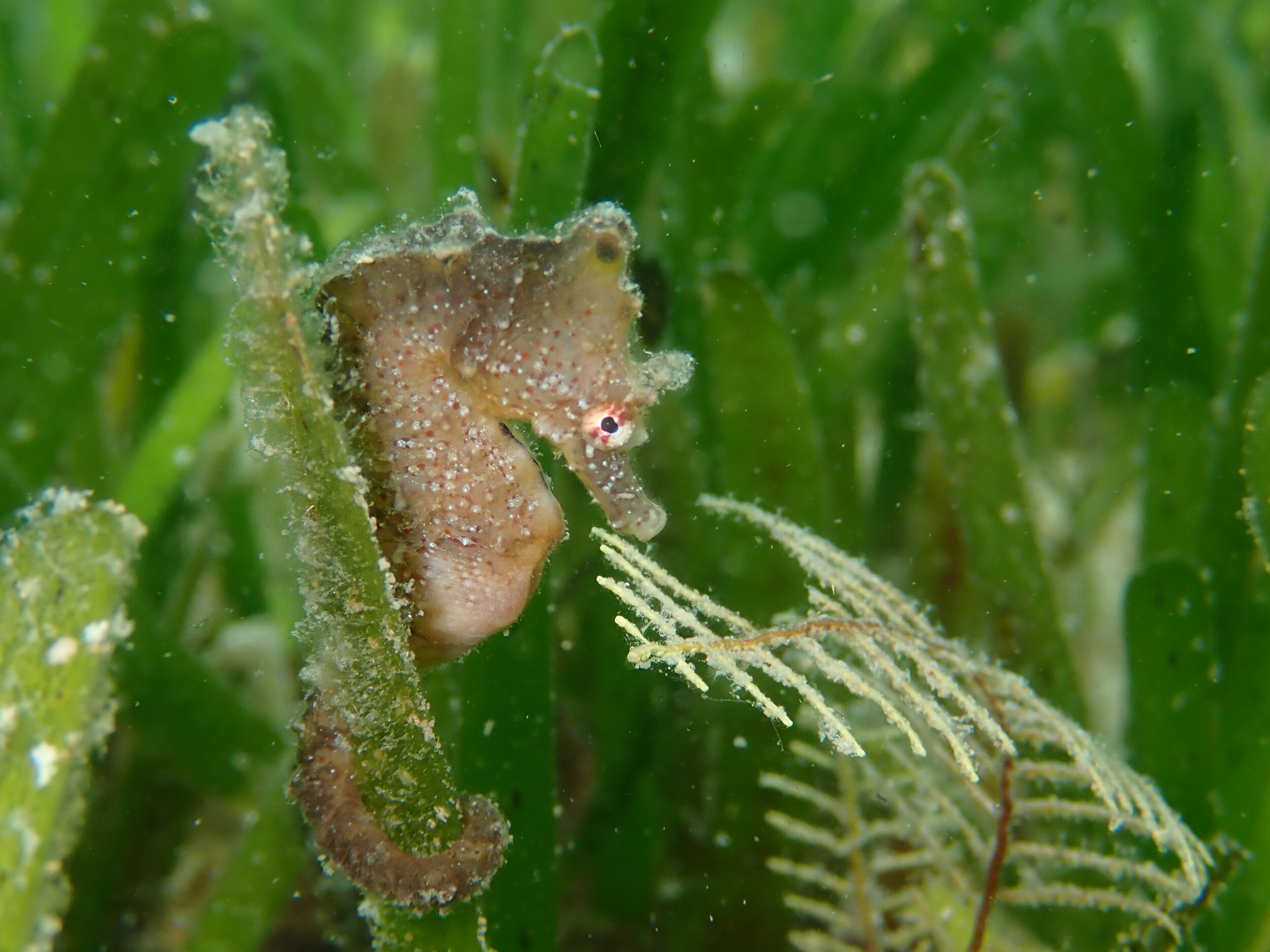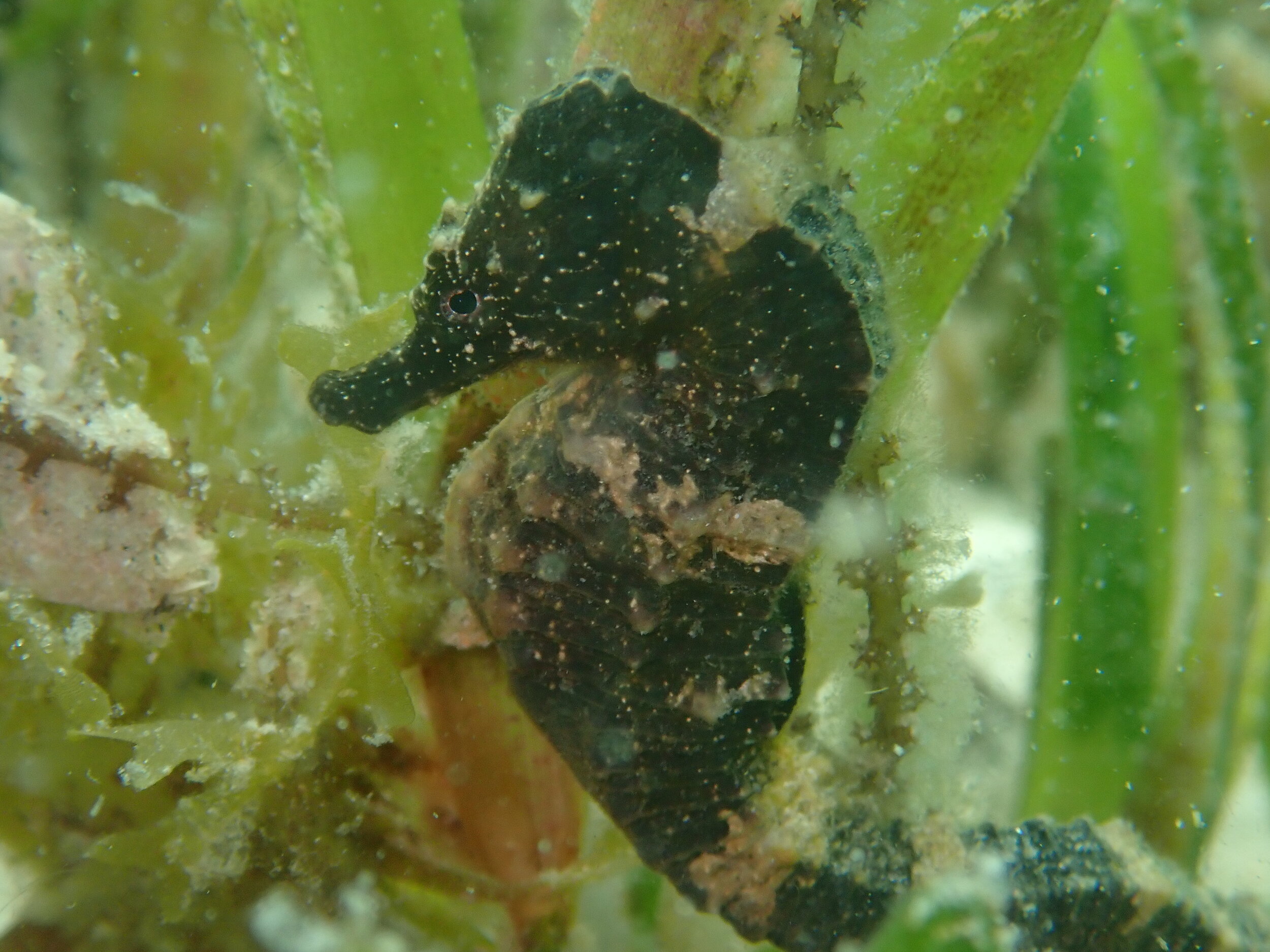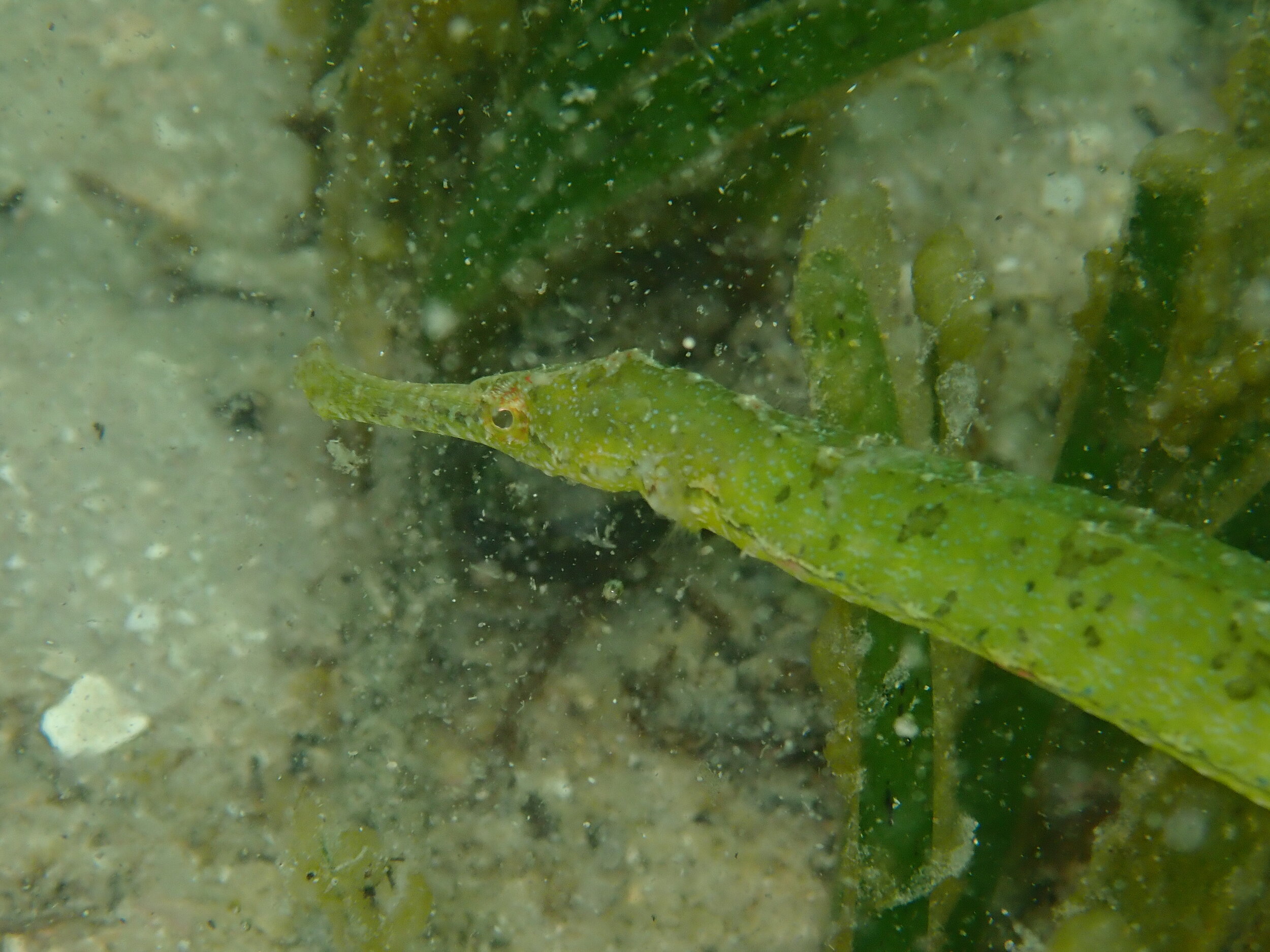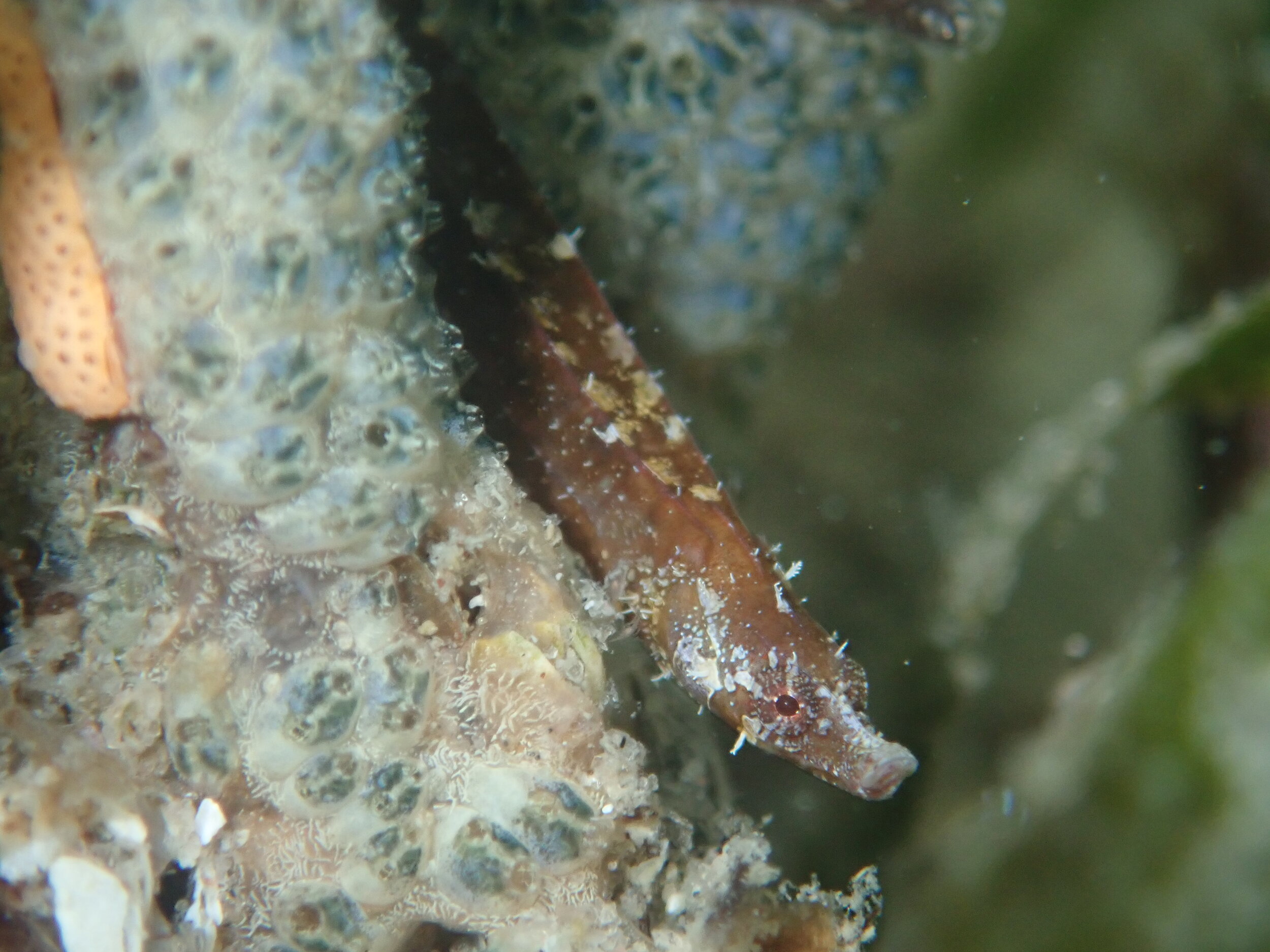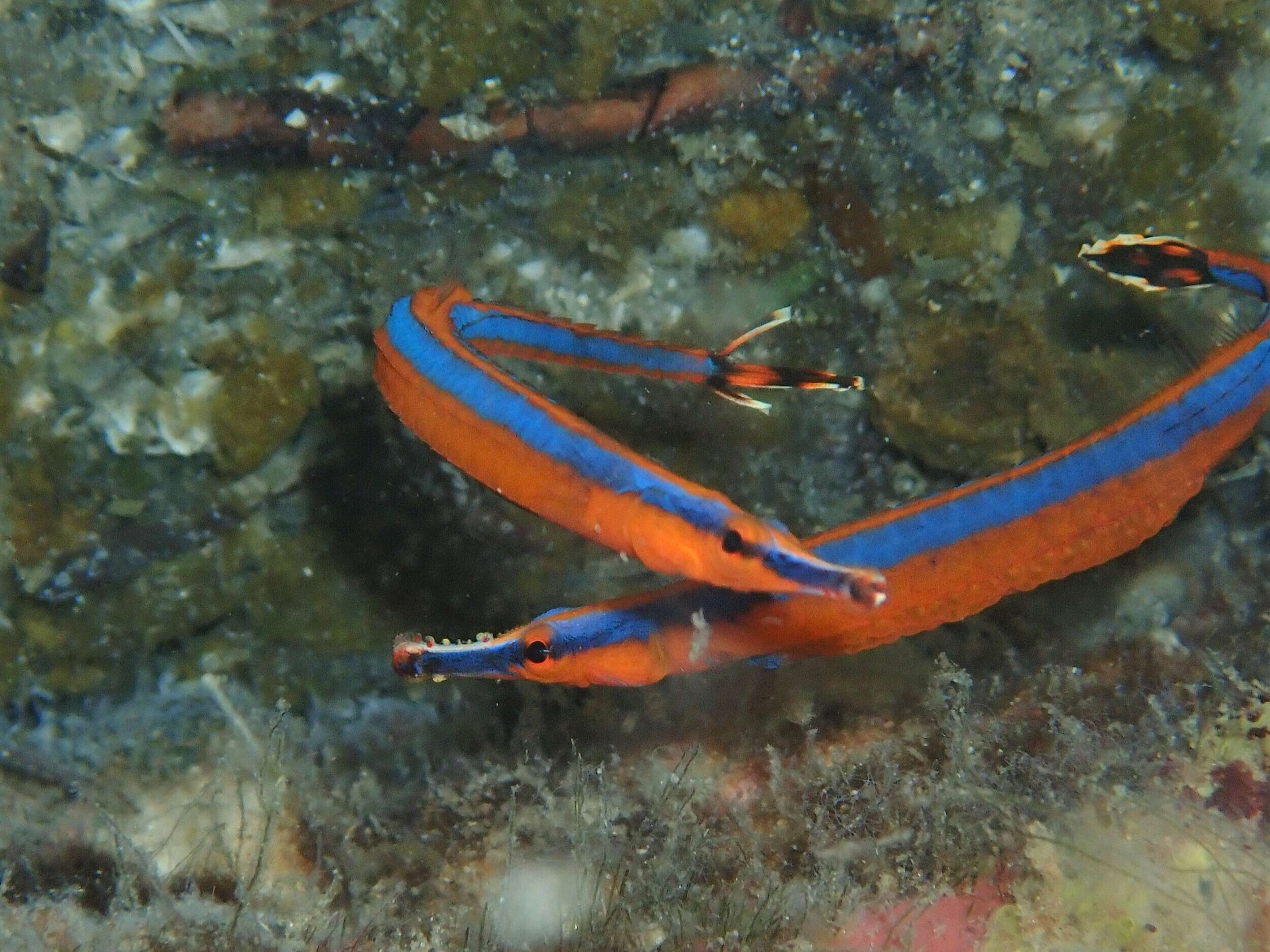By Dr. Louw Claassens, Regional Focal Point for Africa for IUCN SSC Seahorse, Pipefish and Seadragon Specialist Group and Juliet Lyon, Founder and Director of ParCo
This is the inspiring story of how a large haul of dried seahorses poached from the waters of a tiny town in Mozambique led to seahorse conservation and research! It is also the story of how I came to meet some of the amazing syngnathid species we have along the African coast.
It all started in 2018 when Juliet Lyon, founder and director of ParCo, a community-based organization in Vilankulo came to hear about seahorse poaching taking place in Mangalisse, a nearby fishing village. To find out more, she met with local fisheries representatives who confirmed that the village was indeed a target for traffickers linked to the Traditional Chinese Medicine supply chain. Together, they concluded that an outreach campaign to educate the local community about seahorse conservation would be a great step towards curbing the poaching taking place. Juliet teamed up with Susana Vidal, manager of Bahia Mar Hotel, who agreed to help fund an initial education campaign. The campaign was aptly launched on International Tourism day 2018, as the initiative also included the development of seahorse focused tourism in the village.
Shortly after the launch of the campaign, local police confiscated 1782 dried seahorses from traffickers leaving the village, along with notebooks listing the poachers from Mangalisse Village who sold them. The seahorses had all been collected from seagrass beds along the coast near Vilankulo by residents from the Mangalisse village. The traffickers were jailed, and the local community realized that there is a great personal risk in poaching seahorses and that they could also end up in jail if they continue to poach. It was clear that an alternative source of income was needed and through the continued support from Juliet and ParCo, buy-in for the seahorse tourism as an alternative to poaching grew.
Seahorses confiscated from poachers in Mangalisse village in November 2018. (Photo by Gretha De Wet/ Bahia Mar)
Seeing that seahorse poaching brought in a lot of money for the local community, the development of an alternative revenue stream was critical in the promotion of seahorse conservation. The seahorse tourism initiative developed by ParCo works with local fishers who also double as seahorse tour guides. The guides take tourists who visit the area on a dhow (traditional Mozambican boat) trip into the surrounding coastal waters where seahorses can be observed within their seagrass habitat. Once back on land, lunch is served by the local villagers. In 2019, the Mangalisse community led 45 trips earning thousands of dollars which went back into the development of the initiative and community. What makes this initiative great is the fact that it is completely run by the local community, which means that all decisions, planning and funds are controlled by the Mangalisse Fishing Committee.
The ParCo, Bahia Mar and Mangalisse villages team conducted seahorse education (Photo by Gretha De Wet/ Bahia Mar)
Even though this initiative got off to a great start in 2019, in 2020 Vilankulo was all but cut off from tourists because of the global Covid-19 pandemic and seahorse poaching was reported to be on the rise again in Mangalisse. This has, however, not deterred the fisheries committee of Mangalisse to continue with seahorse conservation. Apart from poaching, seahorses in the area are also threatened by extensive subsistence fishing that takes place within the seagrass beds which can lead to by-catch of seahorses (where seahorses are accidentally caught by fishing nets) and habitat damage. As an additional conservation approach, the Mangalisse Fishing Committee decided to demarcate seahorse conservation areas, that will be closed to fishing activities. This next step will require funding to help with further education and outreach initiatives, support capacity building for environmental rangers as well as provide resources for implementation and monitoring of these areas. ParCo and Mangalisse fishing committee are using the GlobalGiving platform to make it easy for supporters around the world to donate and support this initiative online. To find out more you can check out the project website.
As more time was spent with the seahorses of Vilankulo, it became clear that not a lot is known about these seahorse populations. In fact, we know very little about seahorses along the entire east African coast! How can we conserve species if we do not even know what is out there? The need to find out more about the seahorse populations along the Vilankulo coast led to my involvement, as a syngnathid researcher from South Africa, together with Taryn Gilroy and her team from The Sanctuary. The Sanctuary is a 43 000-ha conservation protected area incorporating both land and sea, situated on and around the San Sebastian peninsula in Mozambique. Through this partnership, an initial research project was developed to investigate the diversity and distribution of seahorses in the area. This project was generously funded by Pambele Lodge located in the Sanctuary.
Blue dots indicate field sites along the Vilankulo coast, Mozambique. (Map by Louw Claassens)
The first research fieldtrip in December 2019 investigated what seahorse species are found in the area, their distribution and a general idea of abundances. I was joined by Amancio Huo from Mangalisse Village and Ilido Cole from ParCo. Amancio was the seahorse whisperer during the entire trip, with a keen eye for finding these cryptic critters among their seagrass habitats. During the two-week trip, 32 sites were surveyed, and seahorses were encountered at 71% of sites. Two seahorse species were found during this trip: Hippocampus camelopardalis (Giraffe seahorse) and Hippocampus kuda (Common seahorse). In addition to these, we also found many pipefish. (Photos below by Louw Claassens)
Since this initial field trip, Amancio and Ilidio have continued with monthly seahorse monitoring at ten sites. In addition, they have gained some more specialized skills and are now certified SCUBA divers. The information from these monthly surveys will be used to help the Mangalisse community to demarcate suitable protected areas with high seahorse abundances. We are excited to be working with the community to ensure that their seahorse conservation initiative is based on sound science.
So, what lies ahead in terms of syngnathid research in Vilankulo and Mozambique? We still have so much to learn about seahorses and pipefish in Africa. Going forward, we are teaming up with Graham Short and Nuno Monteiro from the IUCN SSC Seahorse, Pipefish and Seadragon Specialist Group to investigate the taxonomy of the syngnathid species found in the area as well as to find out more about the status of these species. In addition, monthly monitoring will continue until mid-2021.
As a researcher, it is always difficult to be able to study what you love. In many instances we are limited by funding, resources, logistics and what is important to the funder. It makes opportunities like this, researching what you love, being supported by a funder that is also passionate about seahorses and working with local communities and conservationists towards tangible conservation actions, so worthwhile.
